Having left the Everest Base Camp in Tibet, we spend the night at the Kyirong Guest House. Kyirong is at the border of Tibet and just 25 kms from the main (new) Nepalese entry point for anyone traveling overland.
At the border, we have to pass through Chinese customs. It is a long process and despite very few travelers, the baggage inspection is thorough and tedious. Each and every item, souvenir, literature, map etc., on Tibet is confiscated. We exit with only our photographs and memories!
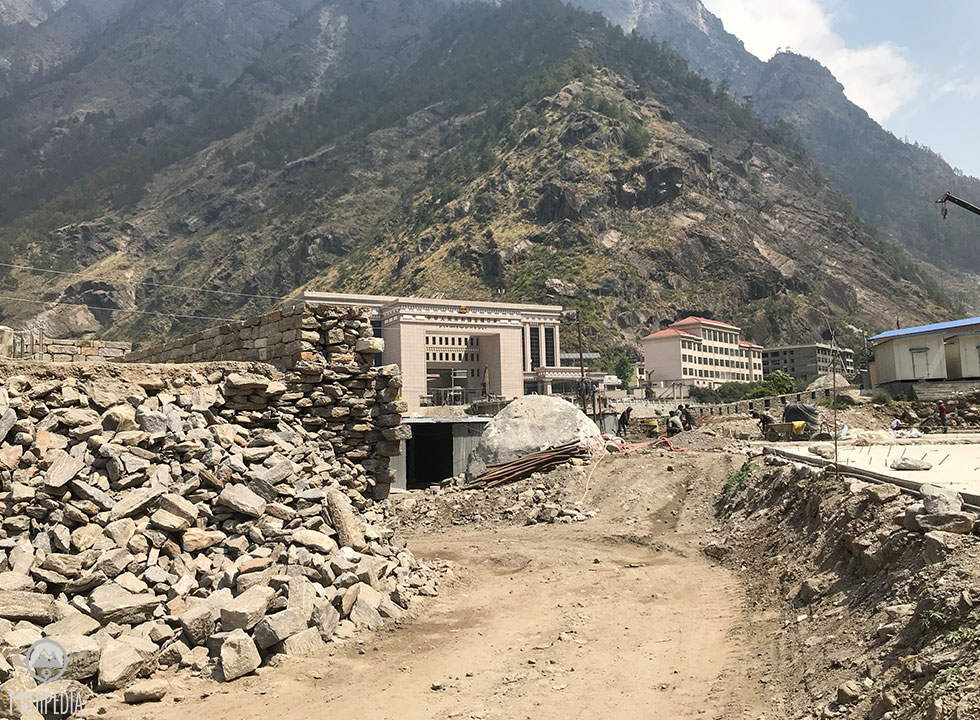
Outside this customs building is (about) a 50m stretch of no-man’s land. We drag our luggage through this dusty path to the Nepali baggage check area.
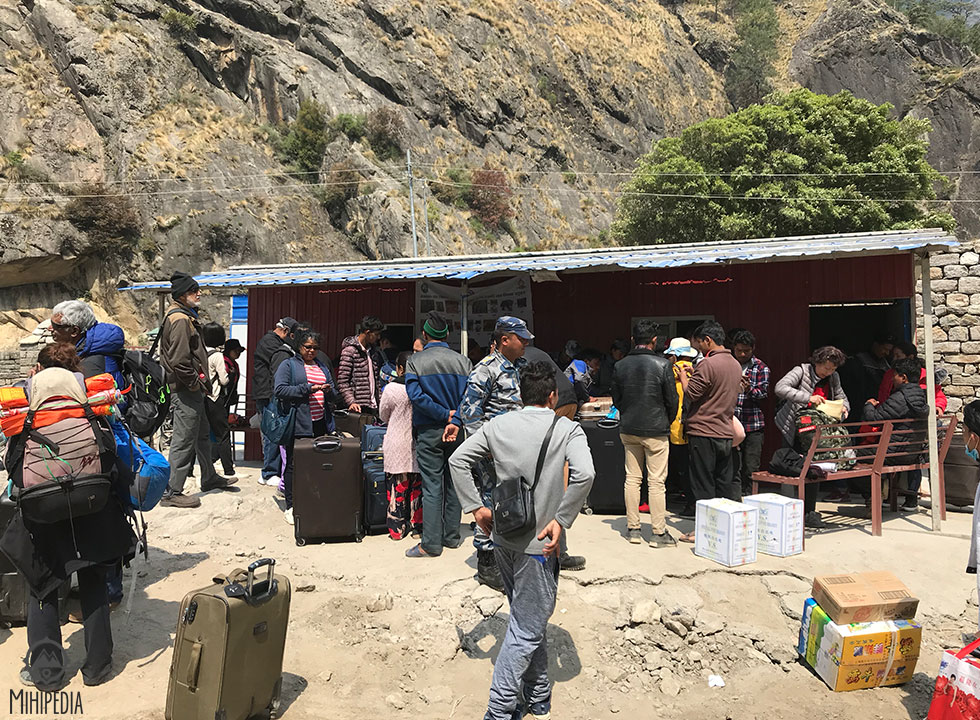 Unlike the one we just left; this is chaotic! Bags, people, dust, confusion and chaos is a stark reminder that we have definitely left China!
Unlike the one we just left; this is chaotic! Bags, people, dust, confusion and chaos is a stark reminder that we have definitely left China!
Another hour (or so) later, after haggling over visas and transportation, we manage to squeeze in to a dilapidated jeep and off we go. The next 150kms takes us nine hours, as we ride, scramble, slip and slide through mud and mayhem to reach Kathmandu. This in itself is quite an experience!

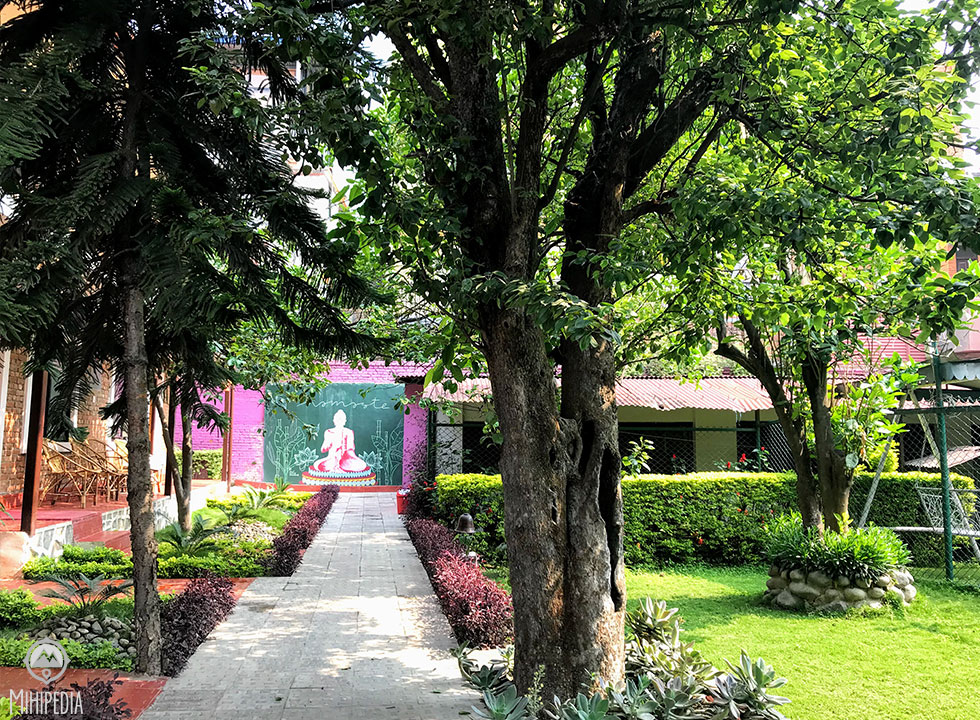
It is late in the evening when we check in to the delightful Nepal Cottage Resort.
Kathmandu is a kaleidoscope of colour, confusion and chaos. It’s beautiful and it’s bad. It’s fun and it’s frustrating. It is totally my jam!
People and bikes, cars and pedestrians, incense and smog, noise and harmony co-exist with the utmost calmness. There is no shouting, honking, screaming and stressing. This is their life.
In all of this madness, Nepal has around seven World Heritage Sites within its ancient kingdoms: Kathmandu, Patan and Bhaktapur. And each of these has its own royal square or durbar, palaces, temples, murals and chronicles.
Since this is my first visit to Nepal, I have got to check out the most touristic places of course!

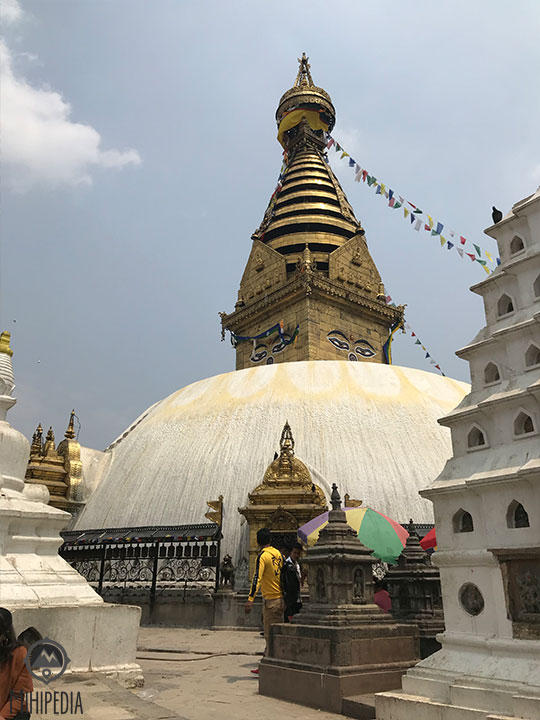
First stop is the Swayambhunath or better known as the Monkey Temple. It’s crowded with pilgrims, worshippers, visitors, tourists and monkeys of course. And the sides of the steep pathways/steps are lined with souvenir shops, touts and tired people, taking a break on this sunny day.
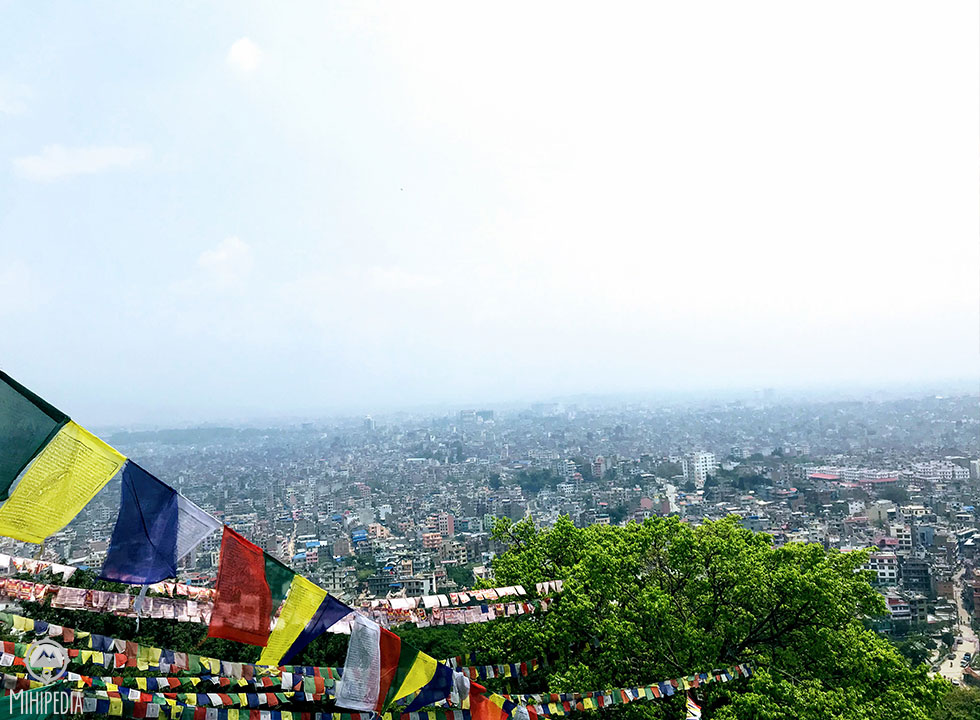


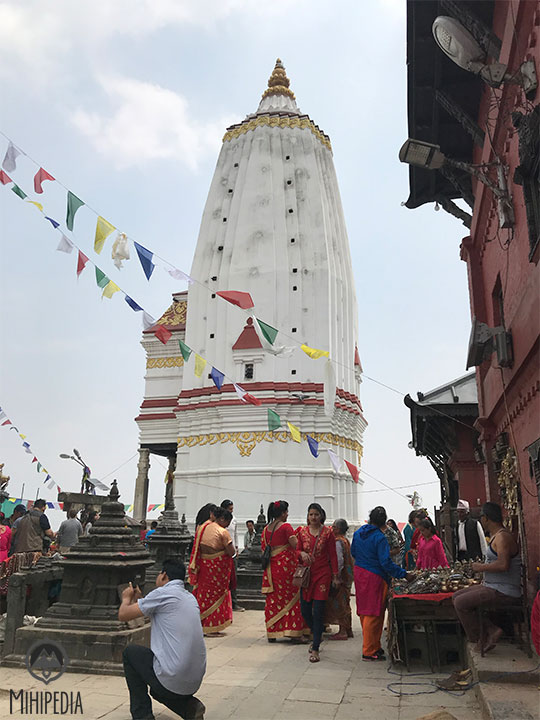

Located on a hillock, Swayambhunath is one of the holiest and oldest Buddhist stupas in Nepal. It is said to have evolved spontaneously when the valley was created out of a primordial lake more than 2,000 years ago. Legend has it that Swayambhunath was created out of a lotus flower that bloomed in the middle of this lake that once spread across the Kathmandu Valley.
Dating back to the 460 A.D., Swayambhunath was built by King Manadeva and by the 13th century, it had become an important center of Buddhism, comprising numerous shrines and monasteries.
 The largest image of the Sakyamuni Buddha in Nepal sits on a high pedestal on the western boundary of Swayambhunath. Other chaityas, statues and shrines of Buddhist and Hindu deities fill the stupa complex. The base of the hill is entirely surrounded by prayer wheels and deities with devotees murmuring, praying and prostrating in obeisance in front of the stupas.
The largest image of the Sakyamuni Buddha in Nepal sits on a high pedestal on the western boundary of Swayambhunath. Other chaityas, statues and shrines of Buddhist and Hindu deities fill the stupa complex. The base of the hill is entirely surrounded by prayer wheels and deities with devotees murmuring, praying and prostrating in obeisance in front of the stupas.

My next stop is at the Kopan Monastery. Situated north of Kathmandu, also on a hillock in Bodhinath, this monastery has a very austere façade.
 I take a path by the right side of this building and come across a beautifully laid out garden with a centerpiece showcasing the story of Lord Buddha.
I take a path by the right side of this building and come across a beautifully laid out garden with a centerpiece showcasing the story of Lord Buddha.



This garden is peaceful, calm and quiet. A group of westerners sit under the shade of a large tree and quietly discuss the meaning of life. In fact, this monastery is considered to be a center for the study and practice of Tibetan Buddhism and popular with many foreigners who live here while studying this philosophy.
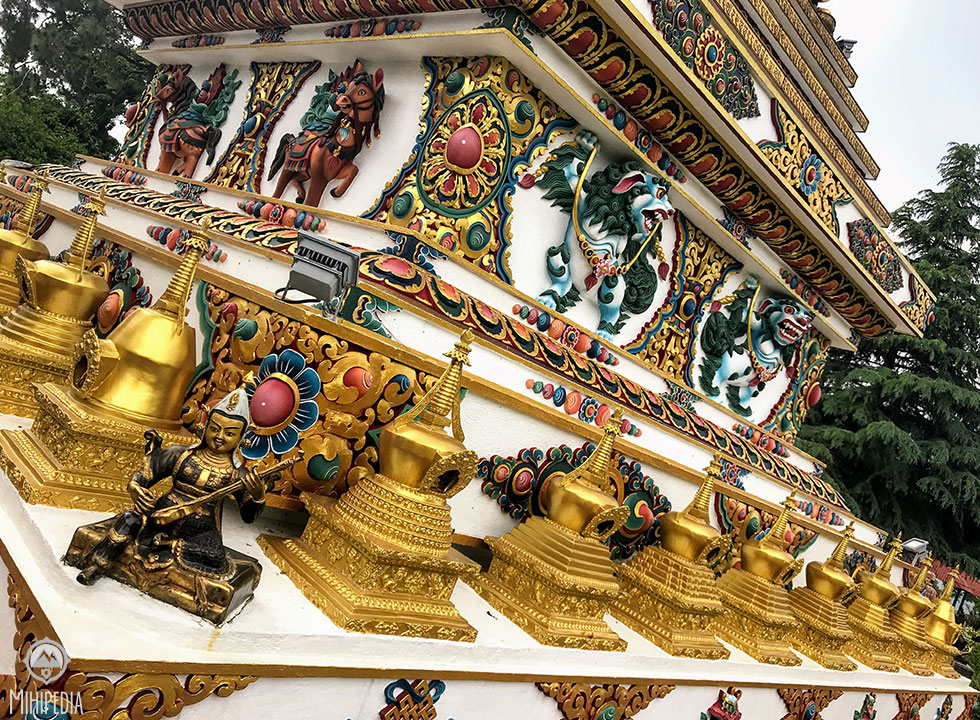
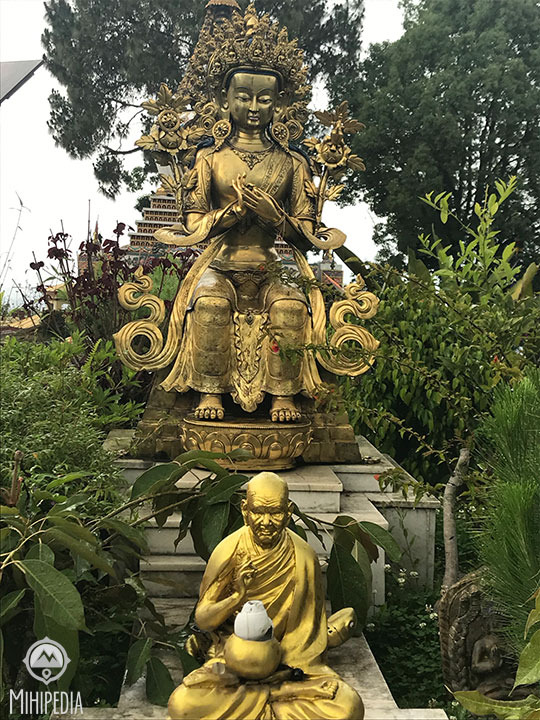
The Kopan Monastery was established in 1969 by Lama Yeshe (1935–84) and Lama Zopa Rinpoche to teach and produce human beings with a good heart and the wisdom needed to serve others all over the world. Lama Yeshe and Lama Zopa Rinpoche left Tibet in 1959 during the Chinese invasion and exiled in India before settling down in Nepal. After the death of Lama Yeshe in 1984, a worldwide search for his reincarnate led to a young Spanish boy, Osel Torres, providing the inspiration for Bernardo Bertolucci’s film Little Buddha. However, Lama Tenzin Osel Rinpoche recently renounced his vows to become a cinematographer in Ibiza!
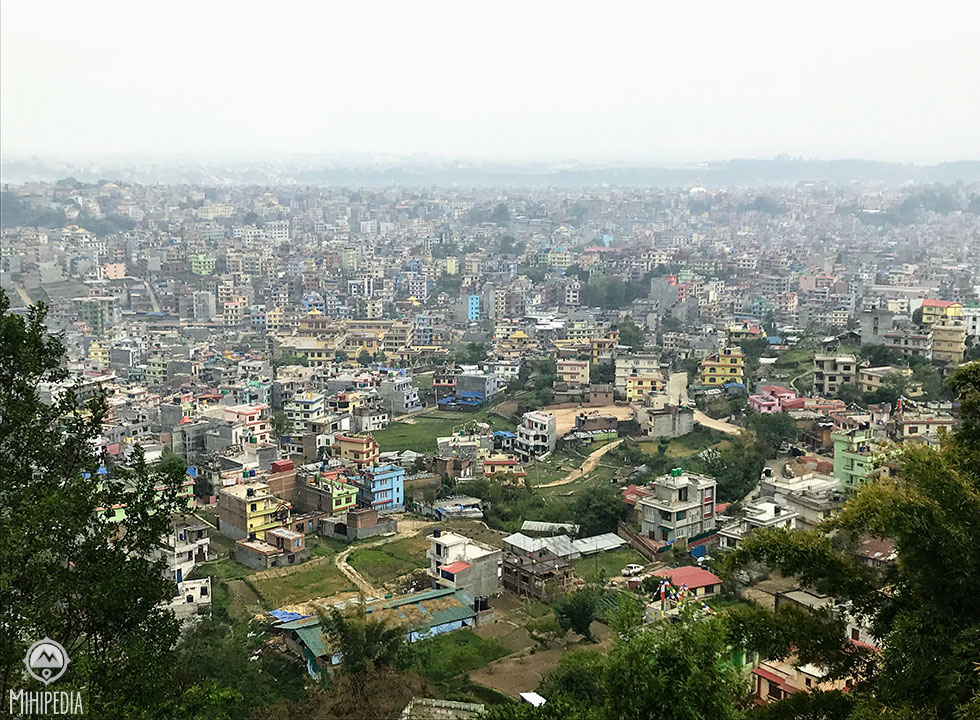
The view of the city of Kathmandu, fringed by the Himalayan mountains is quite something!

My next visit is to see one of Kathmandu’s most iconic landmarks. About 8km east of the bustling city is the 36m high stupa of Boudhanath, one of the largest stupas in South Asia. This is the center of Tibetan Buddhism in Nepal.
Built in the shape of a mandala designed to replicate the Gyangtse of Tibet, the stupa was renovated by Licchhavi rulers in the 8th century. The location of the stupa is interesting as it once lay on the ancient trade route to Tibet and it was here that Tibetan merchants rested and offered prayers for centuries.
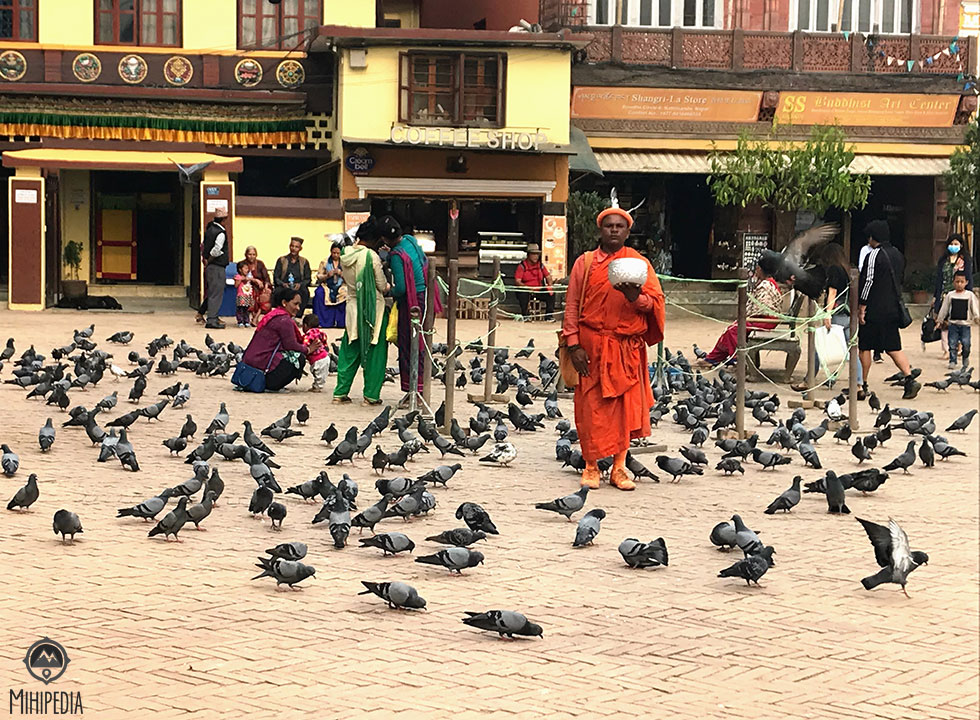
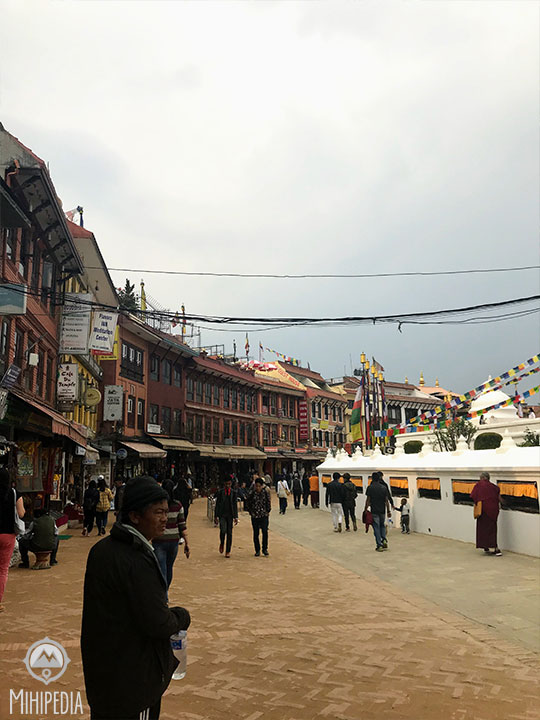


Today, Tibetan pilgrims and visitors throng the vicinity, walking clockwise around the great stupa.
At the base of the stupa tower are the piercing pairs of eyes on each of the cardinal directions representing the all-knowing nature of the Lord Buddha. The canopy below has 13 steps symbolizing the 13 stages of Bodhisattva’s ground for the enlightenment. At ground level there is a brick wall with 147 niches and 108 images of the meditational Buddha inset behind copper prayer wheels.
I must add that this place is also a shopper’s paradise where souvenirs of every kind can be found. I also enjoy talking to the vendors who are some of the friendliest people I’ve met.
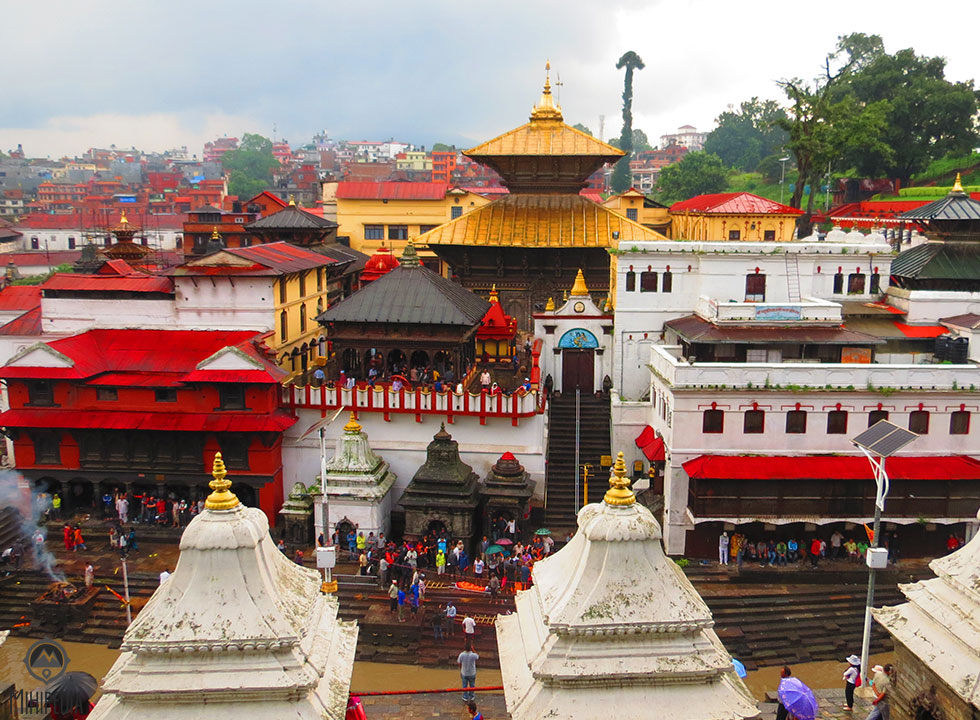
Another important religious site in Nepal is the temple of Pashupatinath. Dedicated to Lord Shiva, Pashupatinath was built in the 5th century and later renovated by Malla kings.
 The rains just a while ago has left puddles along the cobbled path. I walk down to the side of the Bagmati River. This holy river is a special place for Hindus and the surrounding temples are dedicated to several Hindu and Buddhist deities. The importance of Bagmati also lies in the fact that Hindus are cremated on the banks of this holy river which flows directly to the Ganges River in India. According to the Nepalese Hindu tradition, the dead body must be dipped three times into the Bagmati River before cremation, so that the reincarnation cycle may be ended. The chief mourner (usually the first son) who lights the funeral pyre must take a holy river-water bath immediately after cremation. Many relatives who join the funeral procession also take a bath in the Bagmati River or sprinkle the holy water on their bodies at the end of cremation.
The rains just a while ago has left puddles along the cobbled path. I walk down to the side of the Bagmati River. This holy river is a special place for Hindus and the surrounding temples are dedicated to several Hindu and Buddhist deities. The importance of Bagmati also lies in the fact that Hindus are cremated on the banks of this holy river which flows directly to the Ganges River in India. According to the Nepalese Hindu tradition, the dead body must be dipped three times into the Bagmati River before cremation, so that the reincarnation cycle may be ended. The chief mourner (usually the first son) who lights the funeral pyre must take a holy river-water bath immediately after cremation. Many relatives who join the funeral procession also take a bath in the Bagmati River or sprinkle the holy water on their bodies at the end of cremation.
I can see a couple of cremations taking place on the other bank of the river. I don’t feel morbid watching this as I can understand how sacred this process is for the Hindus. Perhaps it’s something to do with the way the Hindu’s view death as rebirth and not the ‘end’.
 The moment the funeral pyre ignites into flames the body is covered with a mass of wet straw which produces a cloak of white smoke. The smoke shields the body from view as the cremation process takes place. The family then wait a number of hours until the body has been completely cremated. Finally, the remains are scattered into the river.
The moment the funeral pyre ignites into flames the body is covered with a mass of wet straw which produces a cloak of white smoke. The smoke shields the body from view as the cremation process takes place. The family then wait a number of hours until the body has been completely cremated. Finally, the remains are scattered into the river.
I cannot enter the main temple as only Hindus are allowed through the gates. The inner sanctum has a Shiva lingam and facing the temple sits the largest statue of Nandi the bull, the vehicle of Shiva. There are hundreds of Shiva lingams within the compound.
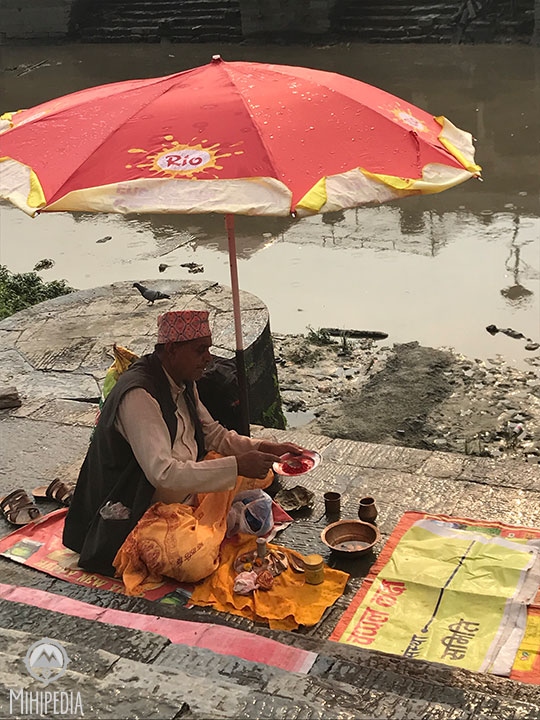
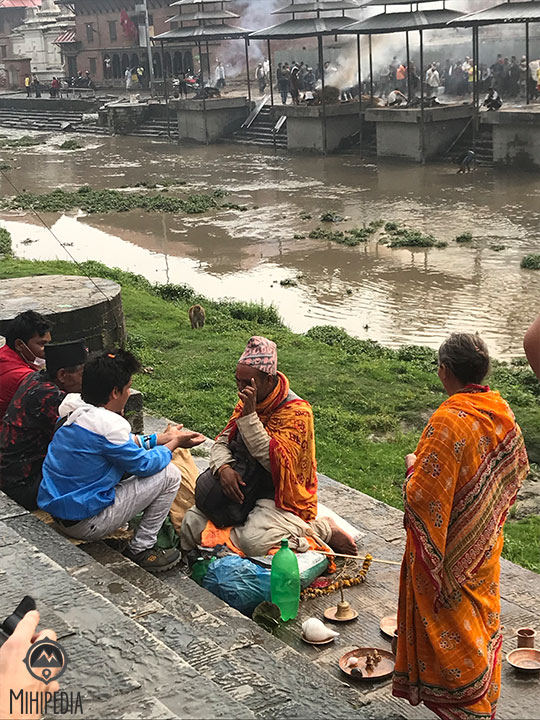

Along the side, several ‘sages’ sit cross legged reading fortunes, while ‘monks’ sit around hoping for an opportunity to pose for a photograph and collect a tip.
Despite the chaos and confusion of Kathmandu’s streets, I love the vibe. The people, the places, the food and friendly people makes this one of my favorite destinations. I can’t wait for tomorrow’s adventure.
